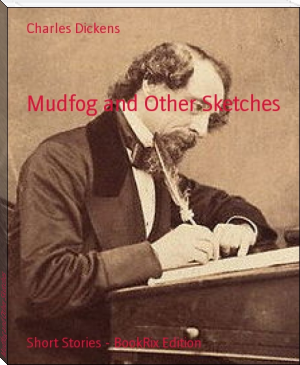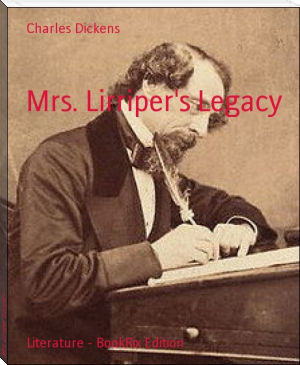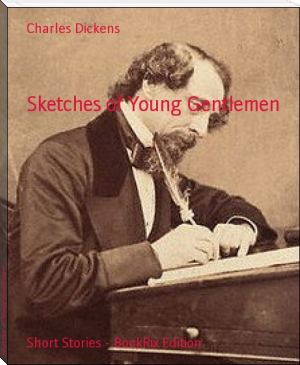author - "Charles Dickens"

Description
Charles Dickens wrote A Christmas Carol in 1843 and the first edition, published on 19th December, was so successful that it sold out in just six days. The publishers had to produce two further editions between Christmas and the new year to meet the demand, and the novella has never been out of print.
A Christmas Carol tells the story of a greedy money-lender, Ebeneezer Scrooge, who is first visited by the ghost of his former business partner and then by three spirits—the Ghost of Christmas Past, the Ghost of Christmas Present and the Ghost of Christmas Yet to Come. They show Scrooge’s lack of compassion to him, compelling him to act more compassionately in the future and to honor Christmas in his heart.

Description
Bleak House, completed by Dickens in 1853, tells several interlocking story-lines and features a host of colorful characters. Though very difficult to summarise, the novel centers around the decades-long legal case of Jarndyce and Jarndyce, involving the fair distribution of assets of a valuable estate. The case is mired in the legal quagmire of the Court of Chancery, whose byzantine and sluggish workings Dickens spares no effort to expose and condemn. Dickens also exposes the miserable condition of the poor, living in squalid, pestilential circumstances.
The novel’s heroine is Esther Summerson, whose parentage is unclear and who has been brought up by a cold and strict godmother, who tells her only: “Your mother, Esther, is your disgrace, and you were hers.” On the death of her godmother, she is given an education through the unexpected intervention of a Mr. Jarndyce of Bleak House, whom she has never met. When she comes of age, she is appointed as a companion to Ada, one of two young people who are “wards of Chancery,” whose fates depend on the outcome of the legal struggle and who are taken into guardianship by Mr. Jarndyce. The other ward Richard, despite Mr. Jarndyce’s frequent warnings, eventually goes astray by pinning all his hopes on a successful outcome of Jarndyce and Jarndyce.
We are also introduced to Sir Leicester and Lady Dedlock, and to their cunning and suspicious lawyer, Mr. Tulkinghorn. He uncovers evidence that Lady Dedlock is not all she seems and determines to remorselessly pursue every lead to expose her secrets.
The novel has a curious construction in that the first-person narrative of Esther, written in the past tense, is interleaved with many chapters written from the omniscient viewpoint and in the present tense.
Several prominent critics such as G. K. Chesterton consider Bleak House to be Dickens’ finest novel, and it is often ranked among the best English-language novels of all time.

Description
Charles Dickens wrote A Christmas Carol in 1843 and the first edition, published on 19th December, was so successful that it sold out in just six days. The publishers had to produce two further editions between Christmas and the new year to meet the demand, and the novella has never been out of print.
A Christmas Carol tells the story of a greedy money-lender, Ebeneezer Scrooge, who is first visited by the ghost of his former business partner and then by three spirits—the Ghost of Christmas Past, the Ghost of Christmas Present and the Ghost of Christmas Yet to Come. They show Scrooge’s lack of compassion to him, compelling him to act more compassionately in the future and to honor Christmas in his heart.

Description
Bleak House, completed by Dickens in 1853, tells several interlocking story-lines and features a host of colorful characters. Though very difficult to summarise, the novel centers around the decades-long legal case of Jarndyce and Jarndyce, involving the fair distribution of assets of a valuable estate. The case is mired in the legal quagmire of the Court of Chancery, whose byzantine and sluggish workings Dickens spares no effort to expose and condemn. Dickens also exposes the miserable condition of the poor, living in squalid, pestilential circumstances.
The novel’s heroine is Esther Summerson, whose parentage is unclear and who has been brought up by a cold and strict godmother, who tells her only: “Your mother, Esther, is your disgrace, and you were hers.” On the death of her godmother, she is given an education through the unexpected intervention of a Mr. Jarndyce of Bleak House, whom she has never met. When she comes of age, she is appointed as a companion to Ada, one of two young people who are “wards of Chancery,” whose fates depend on the outcome of the legal struggle and who are taken into guardianship by Mr. Jarndyce. The other ward Richard, despite Mr. Jarndyce’s frequent warnings, eventually goes astray by pinning all his hopes on a successful outcome of Jarndyce and Jarndyce.
We are also introduced to Sir Leicester and Lady Dedlock, and to their cunning and suspicious lawyer, Mr. Tulkinghorn. He uncovers evidence that Lady Dedlock is not all she seems and determines to remorselessly pursue every lead to expose her secrets.
The novel has a curious construction in that the first-person narrative of Esther, written in the past tense, is interleaved with many chapters written from the omniscient viewpoint and in the present tense.
Several prominent critics such as G. K. Chesterton consider Bleak House to be Dickens’ finest novel, and it is often ranked among the best English-language novels of all time.







